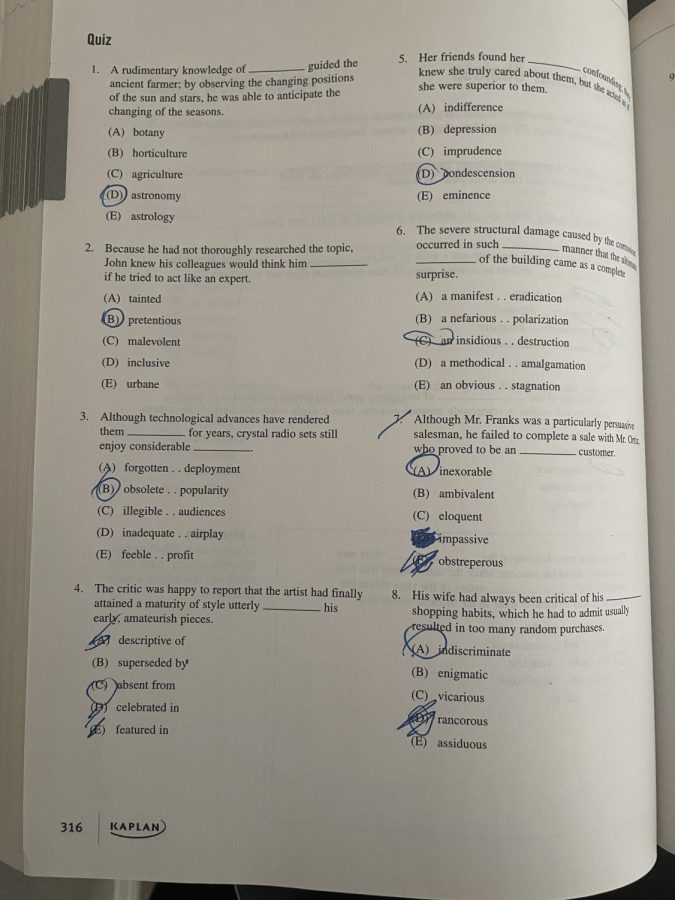Why Test-Optional Policies in College Admissions Are Not Equitable [OPINION]
An email notification pings on your laptop. It is titled “Your Application Has Been Updated.” You close your eyes, hold your breath, and open the admissions portal. Will you open your eyes to see pixelated confetti and a “Congratulations,” or will you sigh at a pitiful “We Regret To Inform You” letter?
The college admissions process has always served as a great source of anxiety for students. Lower income students are specifically affected by this in a unique way, as acceptance into America’s prestigious universities serves as a gateway to upward class mobility.
American colleges have adapted to accommodate lower income students’ needs in the application process: 76% of U.S colleges made test score submissions optional for applicants in the 2021-22 school year, since test scores are positively correlated with income.
However, lower-income applicants have faced a devastating consequence to this policy: increased competition for acceptance letters. The rise of test-optional admissions coincides with application rates rising by roughly 20% in the past year.
Colleges depend on early decision applicants when they have an influx of applications. An early admission acceptance into a college is binding. This naturally puts wealthier students at an advantage; they can apply to schools early without the fear of an inadequate financial aid package. This further exacerbates application rates. Students scramble to guarantee admission into at least one top school without confirming that they’ll be able to afford the cost not covered by financial aid.
With test scores increasingly being left out of the picture, admissions officers have put more focus on a student’s extracurricular activities, which are also greatly dependent on class. Higher income students can afford to go to summer camps, spend time outside of school cultivating their interests instead of working to support their family, and use their parent’s connections to embellish the activities listed on their applications.
Schools want to mold the fabric of admissions into one that is equitable, but it is impossible to take class factors out of the equation. If colleges reinstate test score requirements for applicants, they will be given a benchmark to evaluate students enrolled in vastly different schools. It is true that a student’s academic success can be measured through grades, but tests contextualize a student’s success nationwide.
Similarly, lower scores on the SAT and ACT correlate with lower-incomes, but the main benefactors of test optional policies are higher-income students who can afford to pay for schools with unsatisfactory test scores.
Aside from test-optional policies, colleges have successfully evaluated whether a student deserves acceptance through contextualizing test scores within a student’s class. If colleges are looking for a solution to slash admissions inequality, class-based affirmative action minimizes stress for disadvantaged students.

Hi! I’m Mbone, and this is my junior year at Grandview and my second year on The Chronicle Staff. I’m a part of the Opinions Department. My favorite...







![Bill HB24-1448: What Does It Mean? [OPINION]](https://ghschronicle.com/wp-content/uploads/2024/05/Hayne-Photo-1-600x450.png)
![Colorado Rockies: No Trophy in Sight [Opinions]](https://ghschronicle.com/wp-content/uploads/2024/05/IMG_3018-2-600x450.jpg)
![Freshman 101: Great Intentions; Repetitive Practices [Opinions]](https://ghschronicle.com/wp-content/uploads/2024/05/Screen-Shot-2024-05-02-at-1.58.44-PM-600x492.png)
![Why is APUSH So Hard? [Opinions]](https://ghschronicle.com/wp-content/uploads/2024/05/APUSH-600x338.jpg)



